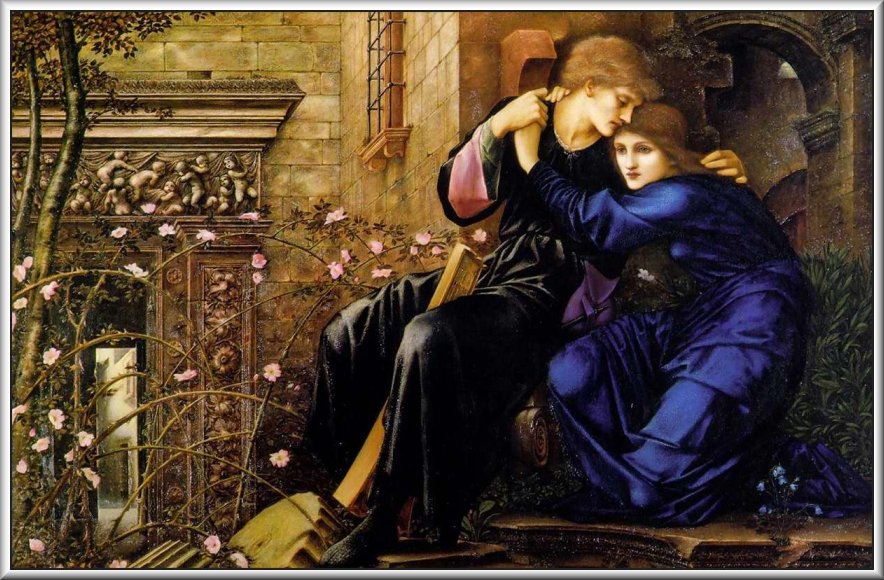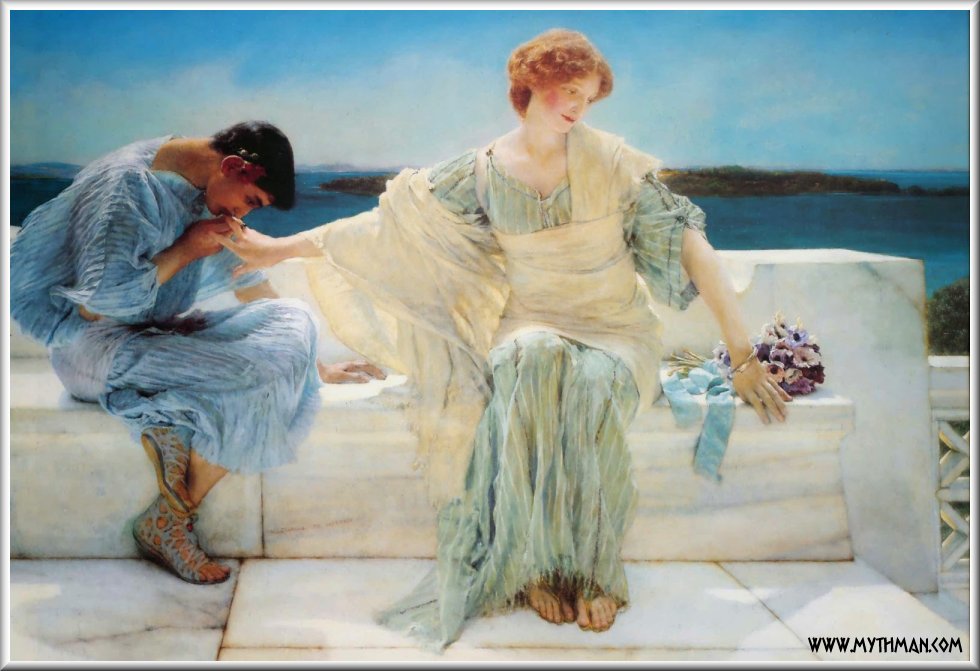
Mythological Gallery/DURYER/2630
From Wikipedia, the free encyclopedia In Greek mythology, Thisbe ( Ancient Greek: Θίσβη) was a Boeotian nymph, from whom the town of Thisbe derived its name. She may be the naiad of the spring, well or fountain of that town. Greek deities series Primordial deities Titans and Olympians Water deities Chthonic deities Personified concepts Nymphs

141014 Thisbe and Pyramus Medieval Garb, Medieval Life, Medieval Fantasy, Medieval Manuscript
Pyramus and Thisbe ( Ancient Greek: Πύραμος καὶ Θίσβη, romanized : Pýramos kai Thísbe) are a pair of ill-fated lovers whose story forms part of Ovid 's Metamorphoses. The story has since been retold by many authors. Mythology Ovid Pyramus and Thisbe are two lovers in the city of Babylon who occupy connected houses.

THISBE ‘Female Figure in Greek Mythology’ Bronze sculpture by T Barny Artfinder
ENCYCLOPEDIA THISBE (Thisbê). A Boeotian nymph, from whom the town of Thisbe derived its name. (Paus. ix. 32. §2.) Source: Dictionary of Greek and Roman Biography and Mythology. CLASSICAL LITERATURE QUOTES Pausanias, Description of Greece 9. 32. 2 (trans. Jones) (Greek travelogue C2nd A.D.) :

The Tragic Love Story of Pyramus and Thisbe Nirvanic Insights
Deciding to elope, Pyramus and Thisbe agreed to meet at night under a mulberry tree outside the city. Thisbe arrived first, wearing a veil over her face. When she heard a lion roar, she fled, dropping her veil. The lion, whose jaws were bloody, found the scarf and tore it up. When Pyramus arrived, he saw the stained, tattered veil and assumed.

pyramus and thisbe Google Search Classical Mythology, Greek Mythology, Pyramus And Thisbe
Thisbe arrived first, but saw a lioness that had blood all over the mouth because of hunting; Thisbe, frightened, fled losing her veil in the process. When Pyramus arrived, he saw the veil, and horrified thinking that Thisbe was dead, fell on his sword and died. His blood fell on the white mulberry fruit, staining them.

Myth Man's Pyramus and Thisbe Two
Fantasy Pyramus was a handsome youth, and Thisbe the fairest maiden, in all of Babylonia, where Semiramis reigned. Pyramus and Thisbe lived in adjoining houses and they loved each other, they were not allowed to meet each other but only talk through a crack in the wall between the two houses. The two.

Pyramus & Thisbe from Ovid’s gender subtlety to polarized Chaucer purple motes
The love story of Pyramus and Thisbe, not really a part of Roman mythology, is actually a sentimental romance. It is recounted by Hyginus (Fabulae 242) but is better told by Ovid (Metamorphoses 4). The following is the version told by Thomas Bulfinch (The Age of Fable, 1855): Pyramus was the handsomest youth, and Thisbe the fairest maiden, in.

Pyramus
It afforded a passage to the voice; and tender messages used to pass backward and forward through the gap. As they stood, Pyramus on this side, Thisbe on that, their breaths would mingle. "Cruel wall," they said, "why do you keep two lovers apart? But we will not be ungrateful. We owe you, we confess, the privilege of

Pyramus and Thisbe YouTube
A Dictionary of Greek and Roman biography and mythology William Smith, Ed. ("Agamemnon", "Hom. Od. 9.1", "denarius") All Search Options [view abbreviations] Home Collections/Texts Perseus Catalog Research Grants Open Source About Help. Hide browse bar Your current position in the text is marked in blue. Click anywhere in the line to jump to.

Myth Man's Pyramus and Thisbe
Tale of Pyramus & Thisbe (Romeo & Juliet in Greek Mythology) Once upon a time the deep red berries of the mulberry tree were white as snow. The change in color came about strangely and sadly. The death of two young lovers was the cause: Pyramus and Thisbe. He the most beautiful youth and she the loveliest maiden of all the East, lived in.

PYRAMUS AND THISBE GREEK MYTHOLOGY YouTube
Thisbe, by John William Waterhouse, 1909, $\ccpd$. There once lived in Babylonia two lovers named Pyramus and Thisbe, who were separated by a strange misfortune. For they lived in connected houses, and although their parents had forbidden them to marry, these two had found a means of talking together through a crack in the wall.

Pyramus and Thisbe Illuminated manuscript, Book of hours, Visual art
Folklore and Mythology; Thisbe. Thisbe. oxford. views updated May 29 2018. Thisbe in Roman mythology, a Babylonian girl, lover of Pyramus. The Oxford Dictionary of Phrase and Fable ELIZABETH KNOWLES.

Pyramus and Thisbe posters & prints by Albrecht Altdorfer
In Greek mythology, Thisbe (Ancient Greek: Θίσβη) was a Boeotian nymph, from whom the town of Thisbe derived its name. She may be the naiad of the spring, well or fountain of that town.. There is a story in Greek mythology about two lovers Pyramus and Thisbe which the poet Ovid makes use of in Metamorphoses and this is related to an earlier tragic love story in which both lovers die and.

THISBE ‘Female Figure in Greek Mythology’ Bronze sculpture by T Barny Artfinder
Thisbe is a character that appears in the work Metamorphoses by the Roman poet Ovid. She lived in Babylon, and was the lover of Pyramus, both living in connected houses, but being forbidden to marry by their parents, who were rivals.

Thisbe By John William Waterhouse Print or Painting Reproduction
The story of Pyramus and Thisbe clearly shares many features with Shakespeare's Romeo and Juliet: the feuding families, the young man and woman from the rival families who fall in love with each other; the secret tryst; the tragic ending with the two lovers killing each other when they see (or wrongly assume) the other is dead.

Pyramus and Thisbe Abraham Hondius (16311691) Pyramus and thisbe, Greek mythology art
Thisbe arrived there first and encountered a lion. Fleeing in fear, she hid in a dark cave, but as she fled she lost her veil. The lion, which had just killed an ox and whose jaws were stained with blood, soiled the garment. When Pyramus arrived at their meeting place a little while later, he discovered the bloodied veil.